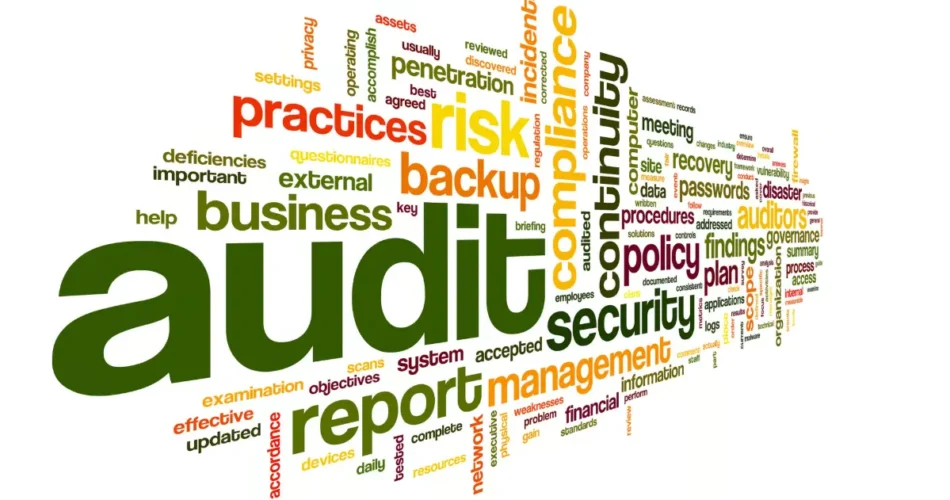In today’s digital world, cybersecurity threats are growing at an alarming rate. Businesses, government agencies, and individuals rely on technology to store and process sensitive data. However, without proper security measures, this data can be at risk. This is where an information technology audit comes into play.
An information technology audit is a process that examines an organization’s IT systems, security policies, and compliance with cybersecurity regulations. It helps organizations identify vulnerabilities, improve their security infrastructure, and ensure they meet legal and industry-specific requirements. In this article, we will explore how IT audits strengthen cybersecurity compliance and why they are essential for businesses of all sizes.
Contents
What is an Information Technology Audit?

An information technology audit is a detailed examination of an organization’s IT infrastructure. This audit helps ensure that systems are operating securely and efficiently. The key areas covered in an IT audit include:
- Security policies and procedures – Checking whether organizations have security measures in place.
- Access controls – Evaluating who has access to critical data and systems.
- Data protection – Reviewing encryption, backup policies, and disaster recovery plans.
- Network security – Assessing firewalls, antivirus programs, and intrusion detection systems.
- Compliance with regulations – Ensuring the company follows legal cybersecurity requirements.
Why Information Technology Audits Are Important for Cybersecurity Compliance
Cybersecurity compliance means following specific rules and standards to protect data from unauthorized access and cyberattacks. Companies must comply with regulations such as:
- General Data Protection Regulation (GDPR) – Protects personal data for individuals in the EU.
- Health Insurance Portability and Accountability Act (HIPAA) – Ensures patient data security in the healthcare sector.
- Payment Card Industry Data Security Standard (PCI DSS) – Protects payment card information.
- ISO/IEC 27001 – International standard for information security management.
Failing to comply with these regulations can lead to heavy fines, reputational damage, and data breaches. An information technology audit helps businesses stay compliant and prevent security risks.
How IT Audits Strengthen Cybersecurity Compliance
1. Identifying Security Weaknesses
One of the main benefits of an information technology audit is identifying security gaps before hackers can exploit them. Auditors review IT systems and pinpoint vulnerabilities such as outdated software, weak passwords, or misconfigured security settings.
2. Evaluating Risk Management Strategies
Every business should have a risk management strategy to deal with cyber threats. IT audits help organizations assess their current security posture and implement better risk management policies to reduce the likelihood of attacks.
3. Ensuring Compliance with Regulations
An information technology audit ensures that companies comply with industry regulations and security standards. This prevents legal issues and helps organizations build customer trust by demonstrating strong cybersecurity practices.
4. Improving Data Protection Measures
IT audits check if companies have strong data protection measures in place, such as encryption, secure cloud storage, and regular backups. Proper data protection helps prevent data loss due to cyberattacks or system failures.
5. Enhancing Network Security
Cybercriminals often target networks to gain unauthorized access to sensitive information. IT audits evaluate firewalls, antivirus software, and intrusion detection systems to ensure networks are secure.
6. Strengthening Access Control Measures
Unauthorized access is one of the biggest cybersecurity risks. IT audits review who has access to critical systems and ensure that only authorized personnel can view or modify sensitive data.
7. Providing Recommendations for Improvement
After completing an information technology audit, auditors provide a detailed report with recommendations to improve cybersecurity compliance. These recommendations help organizations stay ahead of cyber threats.
Steps in an Information Technology Audit
Conducting an information technology audit involves several steps:
1. Planning the Audit
- Define the audit scope and objectives.
- Identify key IT systems and data assets.
- Determine compliance requirements.
2. Conducting Risk Assessment
- Identify potential cyber threats.
- Evaluate current security measures.
- Assess the impact of security breaches.
3. Reviewing IT Policies and Procedures
- Check security policies and their implementation.
- Ensure data backup and disaster recovery plans are in place.
- Verify employee cybersecurity training programs.
4. Analyzing System Security
- Conduct penetration testing.
- Check for software updates and patches.
- Review firewall and antivirus configurations.
5. Assessing Compliance
- Verify compliance with industry regulations.
- Identify non-compliant areas.
- Recommend improvements.
6. Reporting and Recommendations
- Provide a detailed report on findings.
- Suggest best practices to enhance cybersecurity.
- Offer an action plan to fix security gaps.
Best Practices for IT Audits
To make an information technology audit successful, follow these best practices:
- Conduct regular audits – Cyber threats evolve, so audits should be performed regularly.
- Use automated tools – Security tools can quickly identify vulnerabilities and misconfigurations.
- Train employees – Employees should be educated on cybersecurity risks and best practices.
- Keep software updated – Regular updates prevent hackers from exploiting vulnerabilities.
- Implement multi-factor authentication (MFA) – This adds an extra layer of security for system access.
- Monitor network activity – Continuous monitoring helps detect unusual activities early.
Conclusion
An information technology audit plays a crucial role in strengthening cybersecurity compliance. It helps organizations identify security weaknesses, manage cyber risks, protect sensitive data, and comply with industry regulations. By conducting regular IT audits, businesses can improve their security posture, prevent data breaches, and build trust with customers.
As cyber threats continue to evolve, organizations must prioritize IT audits as part of their cybersecurity strategy. Whether you’re a small business or a large enterprise, an information technology audit is essential to ensure a secure and compliant IT environment. Start auditing today and safeguard your digital assets from potential cyber threats!
